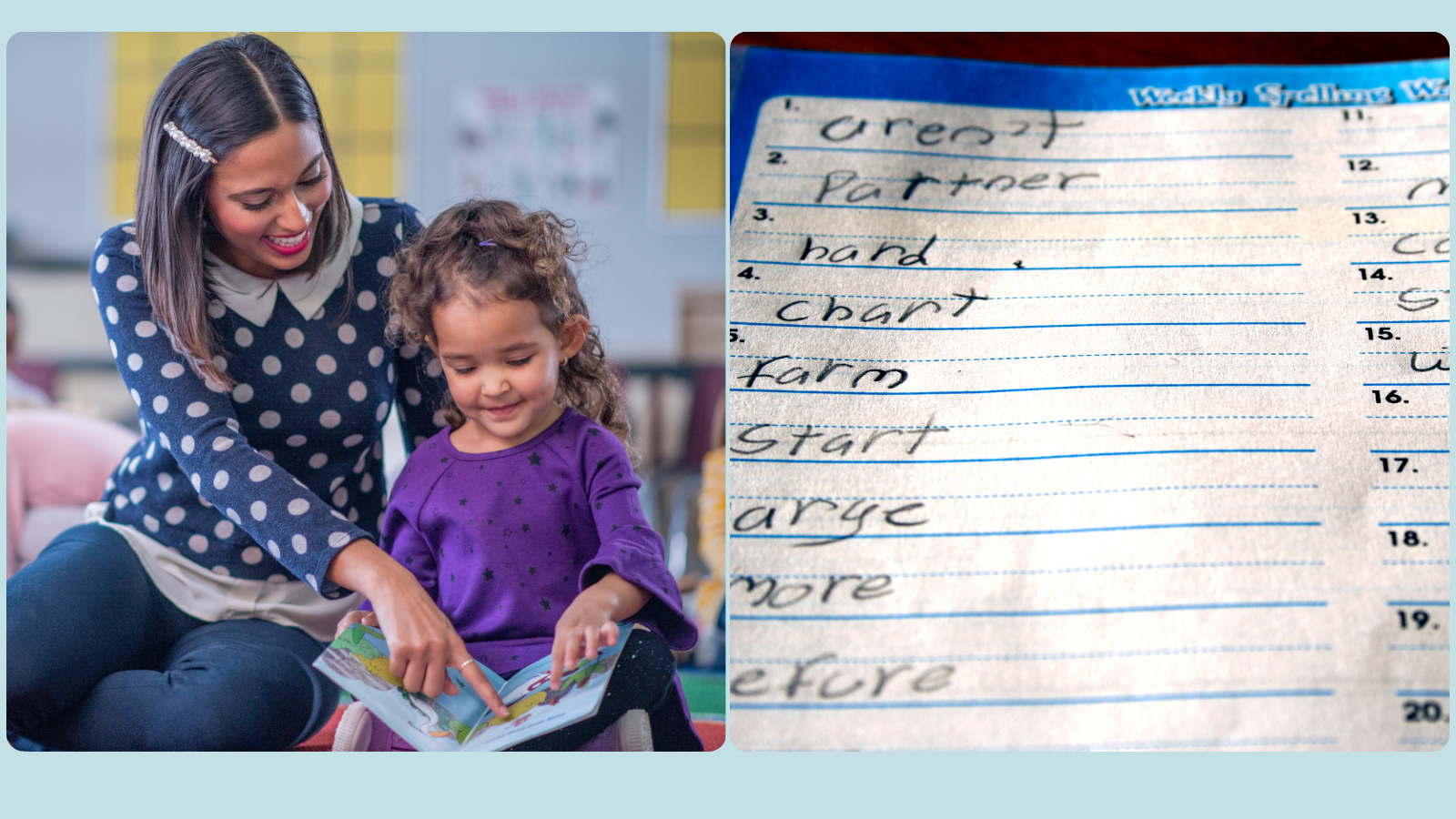The forgotten reading skill: fluency, and why it matters
Without Google or Wikipedia, can you name all the members of the Jackson 5?
Everyone knows Michael. Most of us over the age of 35 know Jermaine. After a bit of effort, some of us will remember Tito and Marlon. But there’s another one: the member I almost always forget at trivia nights.*
Much the same happens when it comes to naming the five, evidence-based and essential reading skills known as the Big 5 ideas. Vocabulary and comprehension skills are pretty obvious. Phonics and phonemic (speech sound) awareness are known to most of us with an interest in teaching reading. But that fifth member of the Big 5 is a bit of a head scratcher.
And that’s a shame: research evidence tells us that the oft forgotten member – reading fluency – is a critical literacy skill.
What does “reading fluency” mean?
Reading fluency is not just speed. Reading a book quickly without understanding what you are reading is useless.
Reading fluency is made up of two parts:
(A) Word recognition and automaticity:
Word recognition accuracy is simply the ability of readers to correctly pronounce the words read in books. Automaticity reflects the extent to which words are quickly retrieved. Together, they go to the child’s ability to recognise words effortlessly and quickly (La Berge & Samuels, 1974).
(B) Expressive reading:
Expressive reading is also known as reading with appropriate “prosody”. It’s the ability to read with appropriate expression, volume, pitch, and stress that enhances the meaning of text when reading out loud (Dowhower, 1991). One theory is that, when the goal is to read for comprehension, good readers attempt to read all the words correctly and to apply the appropriate expression to enhance comprehension (Paige et al., 2014). Whatever the reason, the peer-reviewed evidence tells us that, compared to children who read with poor prosody, children who read with good expression generally have:
- better comprehension skills (Rayner et al., 2012); and
- better reading skills generally (e.g. Daane et al., 2005; Benjamin & Schwanenflugel, 2010).
There is also some evidence that students who read aloud with good expression also tend to be be good “comprehenders” when reading silently (e.g. Pinnel et al., 1995). Conversely, children who read with poor prosody (e.g. in a monotone and word-by-word manner) also have poor comprehension when reading silently.
Why is reading fluency important?
Fluency is sometimes described as a bridge from word recognition accuracy to comprehension (Pikulski and Chard, 2005). We all have a limited amount of attention. If we have to use too much brain power to decode what we’re reading – effortfully sounding out each letter, blending them into words, then repeating the process word-by-word – we have too little attention left to concentrate on the meaning of what we are reading. That’s why readers who read slowly and laboriously – often in a monotone, staccato way – generally have low comprehension of what they are reading, even if they would have no trouble understanding the text if it were read to them by someone else.
As children become more automatic and skilled at reading, they begin to move away from conscious decoding (sounding out words letter by letter, decoding word by word) to recognising words (e.g. Ehri, 2014). When readers can decode words accurately and automatically, they can use most of their attention to comprehension (e.g. Pikulski & Chard, 2003).
How is reading fluency measured?
The key measure of fluency in many reading assessments is reading rate: the number of words a reader can read accurately on a grade level text in a given time frame, e.g. a minute (Rasinksi, 2012). This might seem like focusing on speed for speed’s sake, but there is evidence that reading comprehension improves with increases in reading rate, presumably because, as decoding becomes easier and faster, readers can dedicate more attention to comprehension (e.g. Fuchs et el., 2001).
Many oral reading fluency tests are easy to administer and have been shown to be reliable indicators of overall reading proficiency (e.g. Reschly et al., 2009). As a result, they are often used to screen and monitor progress in developing readers (e.g. Thornblad & Christ, 2014).
When do we learn to read fluently?
It used to be thought that reading fluency was mastered in elementary/primary school, often in the first three years of reading (e.g. Chall, 1996). We now know that many students struggle in later elementary/primary school and into high school (e.g. Morris & Gaffnet, 2011; Paige et al., 2005; Rasinski, 2005). Word recognition accuracy and fast word recognition continue to be important factors for students in late high school and even in university/college (Rasinski, et al., 2005).
How should we teach reading fluency?
Fluency is sometimes taught as a separate area of the reading curriculum. Students are asked to read or re-read lists of words or reading passages until they can read them at a speed appropriate for their grade level. The goal of such drills is for readers to read the words in the text accurately and automatically.
Some researchers think the best way to improve reading fluency is for readers to engage in wide and deep practice (Rasinski, 2012):
- Wide reading is reading a text once and then moving onto a new text. The idea is to increase the volume of reading by having students read one text after another.
- Deep reading (also known as repeated reading) occurs when a student reads a single text over and over until the target fluency level is met. The idea is that repeated practice improves the performance of the activity practiced – reading the given text – and also “partially transfers” to new texts. Research reviews have shown that word recognition accuracy, automaticity, comprehension, and attitude toward reading improve with repeated readings (e.g. Kuhn & Stahl, 2003).
When working on wide and deep reading activities, it’s important that readers don’t equate reading speed alone with good reading. Reading with expression should also be promoted: prosody and automaticity should go hand in hand.
How can we make repeated reading exercises more authentic (and less boring)?
Even though they work, fluency drills are very unnatural and unexciting. Few students (or teachers/speech pathologists) like doing them.
Some researchers advocate using performance-based activities where there is a “real world” reason to practice fluency (both speed and expression) (Rasinski, 2012). One idea is to use texts where the reader will eventually be asked to “perform” them. For example, theatre scripts, dialogues, monologues, poetry, song lyrics, speeches, and stories can be assigned as a reading fluency task. Students rehearse their text over the course of a day or several days, and then perform it to an “audience”, e.g. a class or small group, or even a mock “podcast” or YouTube video.
Classroom-based research has shown that this “performance” approach to deep reading significantly improves:
- reading with expression and automaticity;
- reading comprehension; and
- student satisfaction and enjoyment (e.g. Griffith & Rasinski, 2004).
A note of caution about reading fluency tests: watch out for children with speech disorders
Oral reading rates can be affected by many factors that have nothing to do with actual reading skills. Children with communication disorders like stuttering, childhood apraxia of speech (“CAS“) or severe speech sound disorders may struggle with reading fluency assessments because of physical problems “getting the words out” (e.g. Games et al., 2014). Sometimes, these children are misclassified as children with reading disorders.
For example:
- some children who stutter use “covert” techniques to mask their stuttering such as word avoidance, word substitution, deliberately keeping their utterances short, or slowing down their speech rate (e.g. Murphy et al., 2007). Sometimes their teachers may not even know they are stuttering; and
- children with childhood apraxia of speech have difficulty with motor planning for accurate speech production.
These students may do poorly on standardised reading fluency assessments, but may actually be excellent readers. The effects of stuttering and CAS can also vary day-by-day, situation-to-situation, meaning that oral fluency scores may fluctuate from one assessment to another.
If you know a child has a communication disorder like stuttering, cluttering or CAS – or if a child’s oral reading fluency scores are out of sync with the child’s love of reading or writing skills – discuss with a speech language pathologist who can help identify the root(s) of the child’s problems with oral fluency tasks (Howland & Scaler Scott, 2015).
Bottom line
Reading fluency is a critical component of reading well. But it is more than just reading fast: it involves both word recognition/automaticity and good expression. We used to think reading fluency was a low level skill to be mastered in the first few years of reading; but we now know many older students struggle with fluency into high school.
Reading fluency tests are generally reliable. But they should be used with great care when working with children with communication impairments like stuttering or CAS.
Wide and deep (repeated) reading practice can help improve reading fluency. Fluency drills have their place. But having students practice texts such as speeches, poems, plays and stories for performance is a more enjoyable and authentic way to practice deep reading and to improve fluency.
Related articles:
- Is your child struggling to read? Here’s what works
- Kick-start your child’s reading with speech sound knowledge (phonological awareness)
- “I don’t understand what I’m reading!” – reading comprehension problems and what to do about them
- How to help your school-aged child learn new words – the nuts and bolts of how I actually do it in therapy
- 6 strategies to improve your child’s reading comprehension and how to put them into practice
- Do we spend too much time on rhyming books? What else should we do to prepare pre-schoolers to read
- Teaching the alphabet to your child? Here’s what you need to know
Principal sources:
- Rasinski, T.V. (2012). Why Reading Fluency Should be Hot!, The Reading Teacher, 65(8), 516-522.
- Howland, K., & Scaler Scott, K. (2015). Oral Reading Fluency Testing: Pitfalls for Children with Speech Disorders. The Reading Teacher, 69(6), 653-658.
- Rasinski, T.V., Chang, S.C., Edmondston, E., Nageldinger, J., Nigh, J., Remark, L., Srsen Kenney, K., Walsh-Moorman, E., Yildirim, K., Dee Nichols, W., Paige, D.D., Rupley, W.H. (2016). Reading Fluency and College Readiness, Journal of Adolescent & Adult Literacy, 60(4) 453-460.
* Jackie.
Image: https://tinyurl.com/yc3ygylt

Hi there, I’m David Kinnane.
Principal Speech Pathologist, Banter Speech & Language
Our talented team of certified practising speech pathologists provide unhurried, personalised and evidence-based speech pathology care to children and adults in the Inner West of Sydney and beyond, both in our clinic and via telehealth.








